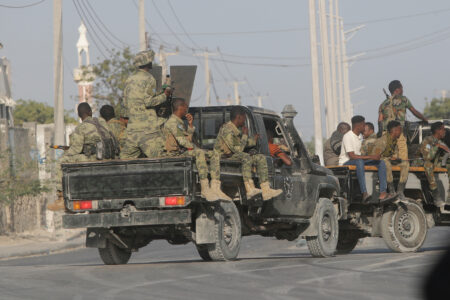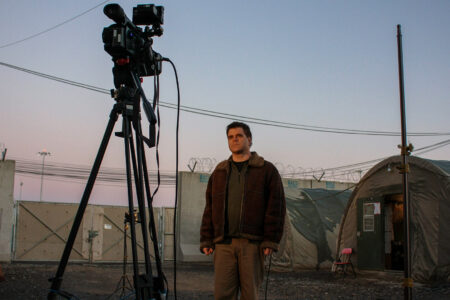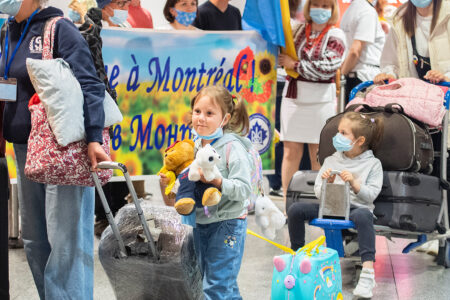
My father was a Canadian professional soldier with a strong historical sense he transmitted to me in an ideal way ”” by possessing a large, well-illustrated library of classics of British military history. That led me to the Regina Public Library system where, after much argument and a parental letter of support, I was graciously permitted into the adult section, where a large collection of the books of the unla- mented George Alfred Henty could be found.
Henty’s technique was to combine history with a fiction- al young hero of impeccably aristocratic birth who, as in the operettas of Gilbert and Sullivan, was transformed into a pen- niless urchin of the ”œlower class.” Through such admirable qualities as honesty, nobility and, above all, ”œpluck”, the lad picked his way brilliantly through some historical episode to arrive, complete with a socially appropriate and lovely wife, a little ahead of his parents’ status. Such, I was urged to believe, was how the British Empire was built and why Saskatchewan’s egalitarian socialism must be sternly shunned.
Among Henty’s innumerable books, one covered an event known in British Imperial history as the First Afghan War, 1839-42. Among his last works, it told a story quite at odds with the usual glorious triumphs. In Afghanistan, I learned, the British suffered their most crushing defeat until Singapore surrendered in 1942. The sole survivor was William Brydon, a British army surgeon, later depicted by the romantic artist of Queen Victoria’s army, Lady Butler. What happened?
Having penetrated to the upper edge of the Indian subcontinent, the Honourable East India Company confronted a feared rival, Russia, and a dying power, Persia, in the mountainous wasteland called Afghanistan. The company’s ambitions had been whetted by easy successes in India. No one could even imagine that Afghanistan might be differ- ent. Then as now, Afghans were a regional nuisance. With no economy to support them, Afghans preyed on their neighbours. Border chiefs learned that it was cheaper to buy them off. The British worried that Afghanistan invited Russia and Persia to expand their empires.
In 1838, Honourable East India Company directors in London authorized a campaign to displace the popular Amir of Kabul, Dost Mohammed, by their own pet pension- er, Shah Shujah, who had been kept for the purpose. A grandly named Army of the Indus was mobilized under Sir John Keane. Ten thousand British and Indian troops, accompanied by their wives and children, prepared to escort 19,000 camp followers, male and female, as well as thou- sands of horses, camels and elephants. After all, insisted the campaign’s historian, John Kaye, a civilized British officer could not be denied ”œthe pleasures of the mess table,” not to mention ”œthe comforts of a pleasant volume and the solacing pipe” or clean linen daily.
Afghanistan’s mountains and peo- ple pose a challenge to any invading army but, true to experience, ancient and modern, the country’s own violent factionalism makes an initial conquest relatively easy. So it was for Keane’s army in 1839, once he had accepted the slow and exhausting process of fighting up a narrow and defended mountain pass. Each hill had to be occupied and its Afghan defenders driven away. The Afghan jezail, a long-barrelled rifled mus- ket, was far superior in range and preci- sion to the British Brown Bess, and most Afghans were crack shots. Somehow the British fought their way to Ghazni, a spectacular fortress on the way to Kabul. A barrel of gunpowder blew in its main gate, British troops swarmed through and the fortress fell. Dost Mohammed promptly fled Kabul, to be welcomed and clapped in prison by the amir of Bokhara. A plump and unwanted Shah Shujah took his throne. His glum sub- jects raised no cheers. British invaders spread across Afghanistan, capturing smaller forts as they had Ghazni, and Afghanistan seemed securely joined to Queen Victoria’s empire.
Not for long. For two years, the British and their families lived happily in Kabul and Kandahar but by 1841, Afghans were making themselves intol- erable to their newest conquerors. Despite complaints from General Keane that the country was ”œfull of robbers, plunderers and murderers, brought up to it from their youth,” the East India Company cut the Kabul garrison to a single British battalion and a few thou- sand Indian sepoys, clustered in two vul- nerable camps outside Kabul. Without them, Shah Shujah would be dead. The British agent at Kabul and Shah Shujah’s handler, Sir William Mcnaghten, con- temptuously cancelled the bribes that had allowed British convoys to pass safe- ly through the mountains. Tribesmen promptly plundered them and the force at Kabul was isolated. By 1840, British officers were routinely insulted in Kabul, and sentries were regularly shot. Old and ailing, the commander at Kabul, Lord Elphinstone, craved rest, not battle. Determined to show who was boss, Mcnaghten rode out to parley with the tribesmen. He and his party were promptly massacred. At last, amid the snows of December 1841, Elphinstone was persuaded to retreat back to India.
On January 6, 1842, about 4,500 soldiers, 700 of them British, and 10,000 civilians set out to march 60 miles east to the British-held city of Jellalabad. At Jagdalak, most of the army dissolved in panic. At Gandamak, tribesmen fell on the freezing, starving mob of civilians and disorganized sol- diers. Brydon and three British officers fought their way free. All were wound- ed; three died. On January 13, a British officer at Jellalabad spied a lone man almost falling off a limping horse. It was Dr. Brydon, convinced he was the sole survivor of the entire army.
Technically he was wrong: a small handful of native troops made their own way to safety. Elphinstone and some of his officers and their wives had given themselves up as hostages for the safety of his army though no Afghan could pre- tend to control the Ghilzai tribesmen who controlled the mountains. Hours behind Brydon, the Afghans poured out of the passes to besiege Jellalabad. With only 2,000 soldiers, their commander, Sir Robert Sale, proposed to negotiate with the Afghans. After all, his wife and daughter were already prisoners. Two more robust subordinates demanded that he hold out. As a horrifying coincidence, a series of earthquakes shattered the for- tifications. The British boldly staged sor- ties that captured Afghan guns, ammunition and supplies and drove off the attackers. Jellalabad’s ”œIllustrious Garrison” had provided a small triumph to offset the greater disaster.
The British needed much more to restore their prestige. They hurriedly formed another army that forced its way up the Khyber Pass, the first invading army to do so since Tamburlane, who had bribed its Afridi defenders to let him through. In September 1842, General George Pollock reached Kabul, released the surviving British prisoners, burned down the Great Bazaar as punishment and then marched home, to the sound of Afghan snipers punishing his rearguard.
Forty years later, in 1880, the British returned, again as part of their Great Game with Russia. The pretext was the slaughter of their embassy staff in Kabul by Afghan troops. Once again, the British experienced disaster. A force of 2,000 was cut off at Maiwand by a larger, well- armed Afghan army. A British regiment, the Royal Berkshires, was massacred. The defeat was again avenged by a successful march from Kabul to Kandahar under Major- General Sir Frederick Roberts, VC, better known to Victorian Canadians as Lord Roberts, or ”œBobs.”
Once again, the British chose the better part of valour and abandoned Afghanistan. The mountainous king- dom stubbornly remained outside the swatches of pink that distinguished Britain’s empire on the classroom maps that chocolate companies once fur- nished to schools across most of Canada. Fighting on the northwest frontier has never ended. The British army sent machine guns, armoured cars, tanks and aircraft up the mountain passes as war- winning weapons. None prevailed. Far away in Canada, my father spent much of his military career studying the tactics of mountain warfare in case his country sent him to battle Afghans. When a divided India rid itself of the Raj, as General Pervez Musharraf recently reminded Canadian television watchers, Britain left its bloody Afghan burden to Pakistan’s post-colonial army. Today, my father’s nightmare has come true: Canadian soldiers have Afghan lessons to learn and to apply.
Despite earnest pep talks from the prime minister and belligerent speeches from retired colonels and gen- erals, the war in Afghanistan is not get- ting more popular in Canada. In a typical Canadian reaction, most voters still don’t want to cause hard feelings. Denouncing the war seems harsh to those who have been killed or maimed in it and, even more, to their grieving loved ones. There has to be some virtue in a struggle to allow Afghan women to hold a job and their daughters to attend school. It requires no ungainly effort for our media to portray the Taliban as insanely brutal. Indeed, the media loy- ally performs exactly as any rational ter- rorist leader would wish: conveying the threat of relentless, inescapable horror.
Canada’s American allies used to believe that their ”œrevolution in military affairs” (RMA) gave them control of any and every battlefield, whether populat- ed by Soviet tank armies or tiny, anony- mous bomb squads. RMA promised seamless information about the entire battle space. UAVs (unmanned aerial vehicles) conveyed endless streams of data to computers at headquarters.
As usual, technical quick fixes were oversold. Osama bin Laden is intact. So are thousands of guerrilla warriors in Afghanistan and Iraq. Canada and its NATO allies increasingly resemble other invading armies, from Alexander the Great’s Macedonians to the Soviet army, who have marched to their doom in the fastnesses of Asia’s poorest country. Catastrophic defeats taught the British that each successive Afghan mountain- top had to be captured before supply columns could pass through adjacent valleys. This demanded patience, exer- tion and losses few ”œcivilized” modern armies could tolerate for long.
A more powerful reason for Afghanistan’s reputation for suc- cessful self-defence is its population. Not only do Afghans share a long, cruel and successful warlike tradition, they have remained desperately poor. Life promises them only a desperate strug- gle for existence and an early death. Is it better to perish in a mud hovel, sur- rounded by the remnants of your starv- ing family, or in heroic self-sacrifice against corrupt foreign infidels?
Canadians have some inkling of poverty, its cure and the consequences. Within living memory for many of us, the 1941 census reported without sur- prise that most Canadians earned too little to meet the costs of shelter, cloth- ing, food and other necessities of life. For most Canadians, life was a struggle, in which the vicious weapons of racial, religious and gender prejudice were readily deployed. In 1951 came a little noticed aberration. The poor, our decen- nial census reported, had become a minority. By 1961, the poor, as the Bible promised, were still among us but had shrunk to a mere 15 percent of the total. Idealists declared that Canada could even eliminate poverty, as President Lyndon Johnson promised Americans with a War on Poverty. Sadly, Johnson found other priorities, as did we. Still, we changed. We have apologized to and compensated vulnerable minorities, be they Japanese, Chinese or our own First Nations, for our ancestors’ cruelty. In a country with an affluent majority, such behaviour now seems inexcusable. Affluence made most Canadians more tolerant, moral and sympathetic. Imagine what it might do to Afghans.
Yes, wealth could also make Afghanistan’s warlords even greedier and more corrupt. No one need pretend that Canada’s magnates grew soft and sym- pathetic. Nor did they suffer any major loss of fortune or influence because humbler Canadians gained enough to eat and stay warm in the winter. We all shared the new consumer society. Only socialists believed that the wealthy were a decisive roadblock to a Just Society.
But what would it take to make some of the poorest people in Asia pros- perous? Here’s an idea you may have heard before. Apart from a very danger- ous highway from Kabul to Kandahar, Afghanistan has almost no transporta- tion infrastructure. Cultivating poppies makes sense because a farmer can load a fortune in poppy seeds on even an old donkey and ship them across the moun- tain. Imagine what a railway could carry along the length of Afghanistan, from China to Iran. Whatever Afghan farmers produced, from wheat or barley to cat- tle, could be sold.
Who would build the railway? While some famous Canadian compa- nies build rolling stock, the Chinese have built a line through mountainous territory to Lhasa in Tibet, not to men- tion much railway-building in Africa. Why not open negotiations with the Karzai government? Yes, the Taliban might attack, but if Afghans saw tangi- ble benefits being destroyed, the guer- rillas would become pests, not partners.
Would China volunteer for the task? Why not? Beijing is as anxious as Washington about Islamic fundamen- talism, especially in its western provinces. It has a long-standing alliance with Pakistan. Whatever the rigours of Chinese Communism, they hardly match Taliban standards of injus- tice and cruelty to women. If Americans are horrified, Washington has not been shy about confiding its massive public debt to the People’s Republic of China. Like us, Americans desperately want an endgame in Afghanistan.
We are spending human lives and billions of dollars to sustain a war effort with no prospect of success. Since most NATO members realize this and refuse troops for a hopeless com- mitment, the alliance is stressed to a breaking point. Asia’s superpower can safeguard most of the values our sol- diers are currently dying to defend.







